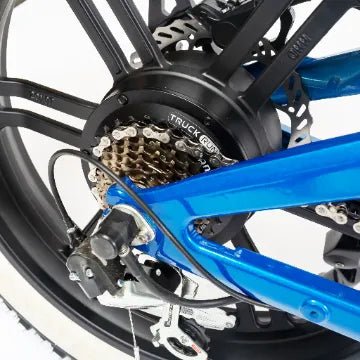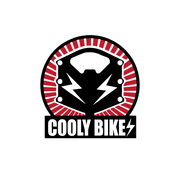
E-Bike Torque vs. Speed: Which Matters More for Your Ride
Understanding Torque in E-Bikes
Torque is the rotational force produced by the motor of an e-bike. In simpler terms, it’s the "oomph" that propels your bike forward. Torque is measured in Newton meters (Nm) and is an important factor for certain types of riding.
- Acceleration: High torque allows your e-bike to accelerate faster from a standstill.
- Hill Climbing: Torque is essential when climbing steep hills or carrying heavy loads.
If you’re riding on uneven terrains or starting and stopping frequently, you’ll want an e-bike with higher torque.
Understanding Speed in E-Bikes
Speed, on the other hand, is how fast your e-bike can travel. It’s measured in miles per hour (mph) or kilometers per hour (km/h). A bike’s top speed is often regulated to comply with local laws, but speed is still an important consideration.
- Commuting: Higher speeds can help you cover long distances quickly.
- Flat Roads: On level ground, speed is the defining factor for smooth and efficient travel.
If you’re a commuter or someone who enjoys long rides on flat terrain, speed may be your top priority.
Torque vs. Speed: The Core Difference
To understand the difference, think of torque as the strength of your e-bike and speed as its swiftness.
- Torque is about how much power the bike can exert to overcome resistance (like hills or heavy loads).
- Speed is about how fast it can move you from one point to another.
When Torque Matters Most
Certain scenarios demand high torque over speed:
- Steep Climbs: Tackling hilly areas becomes much easier with high torque.
- Heavy Loads: If you’re carrying cargo or towing a trailer, torque provides the necessary power.
- Stop-and-Go Traffic: High torque ensures smooth acceleration in urban settings.
When Speed Is a Priority
Speed takes center stage in the following situations:
- Flat Terrains: For long, straight paths, higher speeds mean shorter travel times.
- Commuting: Covering significant distances quickly is essential for commuters.
- Racing: If you’re a competitive rider, speed gives you the edge.
The Role of Motor Type in Torque and Speed
Your e-bike’s motor plays a significant role in determining its torque and speed.
- Mid-Drive Motors: These motors are positioned at the bike’s center, delivering high torque. They’re great for challenging terrains and steep inclines.
- Hub Motors: Located in the wheels, hub motors offer consistent speed and are ideal for flat terrains.
Battery and Power Considerations
The battery is the heart of your e-bike, directly influencing both torque and speed.
- Voltage and Wattage: Higher voltage and wattage typically enhance performance, allowing the motor to deliver more torque and speed.
- Battery Capacity: A larger battery means longer rides, especially when using high torque or speed settings.
Legal and Safety Limits for Speed in Australia (Gold Coast, Queensland)
In Queensland, including the Gold Coast, e-bikes are subject to specific speed regulations to ensure safety and compliance:
- Pedal-Assist E-Bikes (Pedelecs): The motor must stop providing assistance once the speed reaches 25 km/h. However, riders can pedal faster if they choose.
- Throttle-Controlled E-Bikes: These are limited to 200W motor power and typically maintain lower speeds for safety.
It’s essential to stay informed about local regulations and always prioritize safety by wearing a helmet and adhering to speed limits on roads and shared paths.
Customizing Your E-Bike’s Performance
Many e-bikes offer options to adjust torque and speed settings:
- Software Adjustments: Some e-bikes allow riders to tweak performance settings via apps.
- Hardware Upgrades: Upgrading components like the motor or controller can also enhance torque and speed.
Choosing Between Torque and Speed for Your Riding Style
- Urban Commuters: A balance of torque and speed is ideal for maneuvering through traffic and covering distances efficiently.
- Mountain Bikers: High torque is crucial for climbing rugged trails.
- Casual Riders: Moderate speed and torque are sufficient for leisurely rides.
Cost Implications of Torque and Speed
E-bikes with high torque or speed capabilities often come with a higher price tag. Additionally:
- High-Torque Models: May require more durable components, increasing maintenance costs.
- High-Speed Models: Often consume more battery power, affecting range.
Sustainability and Efficiency
Energy efficiency is another factor to consider:
- High Speed: Consumes more battery power, reducing range.
- High Torque: May be more efficient for short bursts of power, like climbing hills or starting from a stop.
Conclusion
The choice between torque and speed ultimately depends on your riding needs. If you’re navigating steep inclines or carrying heavy loads, prioritize torque. On the other hand, if you’re a commuter or enjoy zipping along flat roads, speed will be your go-to. Understanding your typical routes and riding style is key to making the right decision.
FAQs
1: Which is more important for beginners, torque or speed?
Beginners often benefit more from high torque as it provides better control and ease of use in varied terrains.
2: Can you increase torque and speed simultaneously?
Yes, but it depends on your e-bike’s motor and controller. Upgrading components can improve both aspects.
3: Does rider weight affect torque and speed?
Yes, heavier riders may experience reduced speed and torque performance, especially on inclines.
4: Is it possible to find a balance between torque and speed?
Many e-bikes are designed to offer a balanced performance, catering to a wide range of riders.
Yes, some premium models are engineered for both high torque and speed, but they often come with a higher price.
